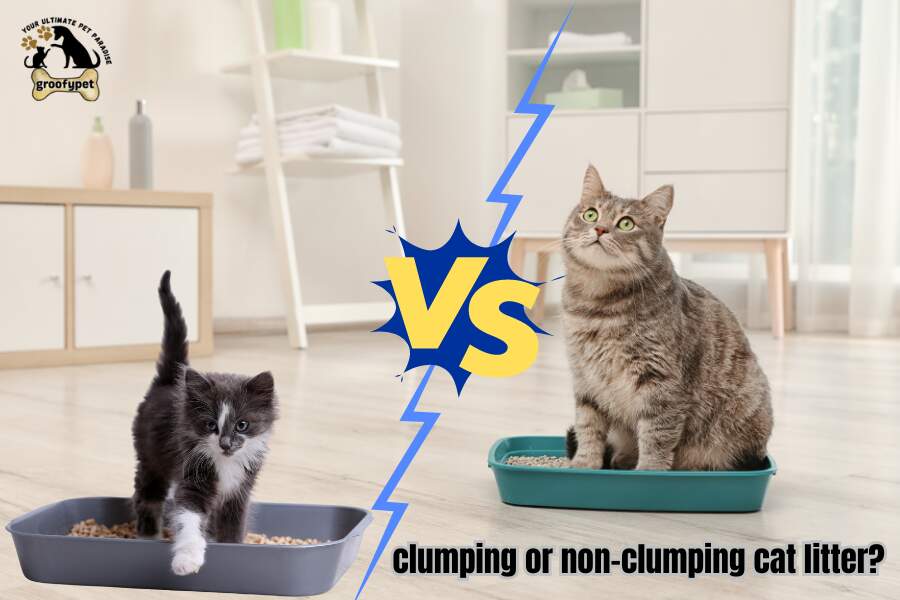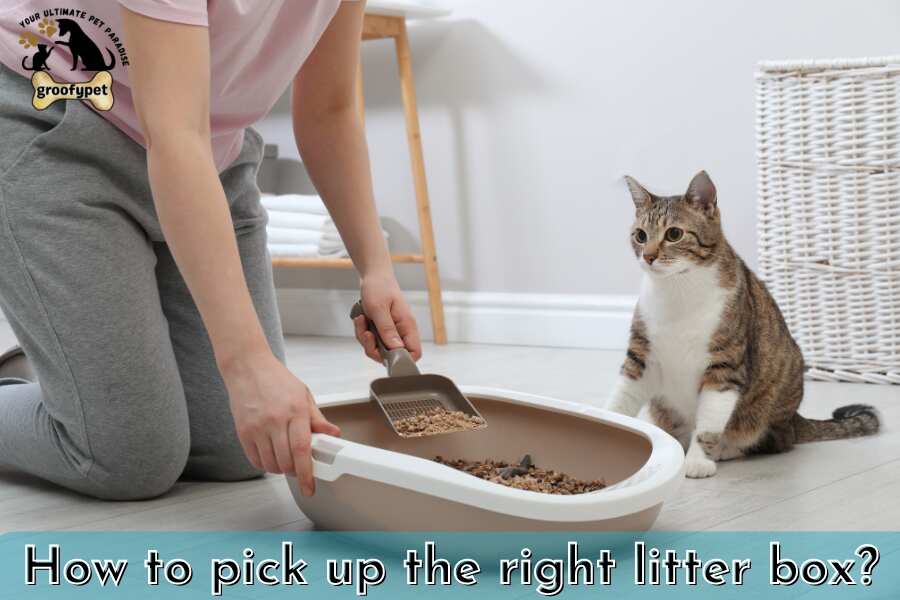
Clumping or Non-Clumping Cat Litter? Cat litter is a principal commodity for cat owners. It has to be the correct type for both the cat owner and the cat. Basically, there are two kinds of litters: clumping and non-clumping litters. The two types of litter each come with different benefits and disadvantages associated with them. Understanding these differences can help you pick the best.
Have you sometimes had a problem cleaning your cat litter box? It can be really tedious if the litter isn’t great. The clumping litter makes this way easier. Sometimes less expensive, non clumping litter can often be messier to deal with. The right litter can save time and keep the smell away from your house.
Your cat’s natural instincts tell it to bury its waste to avoid predators. Cat litter usually clumps solid when wet so waste can be removed and the cat’s toilet can be kept clean and free from odor. Non-clumping litter absorbs moisture, but it doesn’t clump, which generally implies a higher frequency for changing litter. The right type to use for your situation depends on your cleaning preferences.
Table of Contents
ToggleClumping or Non-Clumping Cat Litter: What’s the Difference?
Clumping litter forms solid clumps, making it easy to clean and cost-effective long-term. Non-clumping litter absorbs urine without forming clumps, which some find better for odor control but requires more frequent changes. Pretty Litter offers a balanced solution. Your choice depends on usage, cost-effectiveness, and what’s best for your cat’s need.
Non-clumping cat litter overview
Choosing non-clumping cat litter can be a great option for maintaining a clean litter tray. Hygiene Plus Litter is known for its ability to absorb large volumes of liquid and lock away odours from faeces, which helps keep the tray fresh for a longer week. Though it requires daily attention, the need for frequent cleaning is reduced due to its efficiency in odor control. However, it does require changing every few days and a completely empty and clean litter tray before you fill it with fresh litter. Unlike clumping litter, which can be arduous to manage, non-clumping litter is less heavy and easier for shopping.
This type is ideal for kittens under 12 months of age because they are less likely to eat everything in sight. Non-clumping cat litter has been in use long before clumping cat litters were developed and became widely available. You can find it in a variety of materials such as corn, crystals, grass, clay, and wood, offering unique and sometimes exotic choices for those willing to experiment.
Its excellent moisture absorption and effective odor control make it a reliable choice for many cat owners and also for kitten playing. Despite its dust and shorter lifespan compared to clumping variants, non-clumping litter remains a popular choice due to its specific variables that suit the needs of different cats.
Why I choose non-clumping cat litter?
As a cat owner, you might be curious about non-clumping cat litter. This type of litter has several benefits. Firstly, it is often more budget-conscious because it can be cheaper and offers various material options. Non-clumping litter doesn’t form clumps, which can make it easier to leave your cat’s litter box without constantly emptying it.
Additionally, this litter type is typically more natural and environment-friendly, contributing to a better-smelling home with less dust and tracking nad add some catnip also. For those who prefer a lightweight option with freedom to choose different standards and levels of maintenance, non-clumping cat litter provides an excellent tradeoff. This option allows you to spend less time worrying about litter clumps and more time enjoying your pet.
Clumping cat litter overview
When choosing cat litter, it’s important to consider your cat’s needs and your preferences. Clumping litter is popular due to its ability to form clumps with urine and faeces, making it easy to remove and keep the litter tray clean. Clumping litters are typically made from clay and come in various varieties, including natural and specialty options. These litters can minimize dust and tracking, although some can be heavy.
Clumping litters are made from materials like clay, which helps cat litter how to dispose effectively. This makes it easier to remove waste, keeping the litter tray in tip-top shape and ensuring cleanliness, pleasant sense of smell and free from ammonia smell . While clumping litter can be one of the cheapest options, it’s essential to select the right material for your cat. Non-clumping litters, on the other hand, do not form clumps, requiring you to empty the entire litter tray more frequently to maintain cleanliness.
Why I choose clumping cat litter?
As a cat lover, I’ve found that clumping cat litter is a game-changer for controlling odor. This type of litter is highly absorbent, which means it’s great for fighting liquid waste or cat pee. When your Bengal cat uses the litter tray, the waste material mixes with the litter and forms hard clumps. This makes it easy to remove clumps, eliminating pee smell and keeping the area clean.
I’ve noticed my finicky and sometimes newly adopted cat is less stressed and unhappy when using this type of litter, probably because the odor control is much better. There are many varieties available, so you can find the perfect mix for your cat. Even if your cat is set in their ways, you can gradually introduce clumping litter, giving them a chance to get used to it. This not only helps in avoiding accidents in other places but also makes cleaning the litter tray much easier for both of us.
Choosing between Clumping Or Non Clumping cat litter
Non-clumping litter is not usually as expensive as clumping litter when initially purchased. Still, clumping litter has some definite advantages that make it easier and cheaper in the long run. The first advantage is that, unlike conventional littering material, clumping litter groups into a solid particle when in contact with moisture, for instance, urine.
This makes it easy for you to dispose of the wastes; therefore all that is required is scooping of the clumps and solids frequently, not the total change of the litter box contents as done often with other types. This means that the targeted waste can be easily removed, thereby making the atmosphere cleaner for your cat, and you would end up using less litter than you usually do and could save you more cash.
Secondly, the facility that clumping litter offers does come with the added advantage of being more effective at dealing with odors than its non-clumping counterpart. Also, the clumps created by this type of litter are good at trapping odors; this ensures that they do not circulate all around your home.
This can be especially helpful in households with multiple feline residents or in small apartments where smell management is of super importance. In addition, let us recognize that odor control and box maintenance will enhance litter hygiene, which can make your cat use litter consistently, minimizing the possibility of accidents around your home.
Also Read: how to kitten proof your home?
Clumping or Non-Clumping Cat Litter: Pros and Cons
Clumping cat litter
| Pros | Cons |
|---|---|
| 👍 More affordable than clumping litter | 👎 Doesn’t clump, making it harder to identify the location of cat waste |
| 👍 More material selection available | 👎 Leads to shorter box life |
| 👍 Sometimes provides better moisture absorption | 👎 Entire litter box can become stinky quickly |
| 👍 Requires less daily maintenance | 👎 Changing the litter is determined by how bad the odor gets |
Non-Clumping cat litter
| Pros | Cons |
|---|---|
| 👍 Clumps make it easy to identify cat waste | 👎 Generally more expensive than non-clumping litter |
| 👍 Ensures a longer litter box life | 👎 Offers minimum material options |
| 👍 Improved odor control | 👎 Produces more dust and tracking |
| 👍 Simplifies daily chores and provides a hygienic environment for pets | 👎 Needs daily maintenance |
How to pick up the right litter box?
When picking the right litter for your feline companion specially when cat declaws, you have two main contenders: clumping and non-clumping litter. Clumping cat litter is popular for its ease of cleaning. It forms solid clumps, making it simple to scoop and maintain a clean litter box. This type of litter is cost-effective in the long run because it lasts longer, giving cat lovers peace of mind and a happy, healthy cat and it can be more comfortable after cat declaws.

Non-clumping litter, on the other hand, has its strengths. It absorbs pet urine but doesn’t form clumps, which some people find better for odor control. Non-clumping litter might be more cost-effective upfront, but it often requires more frequent changes. When considering factors like usage, cost-effectiveness, and the desire for a superior option, many find that Pretty Litter offers a balanced solution.
Both types have their merits, but your choice depends on your knowledge and what’s best for your feline companion. For some, the long-lasting nature of clumping litter makes it the winner in this arena. For others, the simplicity and immediate cleaning needs of non-clumping litter fit better in a cat constipation situation. Either way, understanding these options helps ensure a clean litter box and a content cat.
Also Read: kitten and puppy at the same time
Frequently Asked Questions
Is it better to use clumping or non-clumping litter?
When deciding between clumping or non-clumping cat litter, consider odor control, wet waste management, and longevity. Clumping litter forms easy-to-remove clumps for a fresher litter box experience.
Why would I choose non-clumping cat litter?
Non-clumping cat litter is preferred by some people for its cost-effectiveness and cat-friendly texture. Made from clay, it offers effective odor control without clumping, suiting cats’ preferences and minimizing expense.
Do cats prefer clumping cat litter?
When deciding between clumping and non-clumping cat litter, consider your cat’s preference. Cats often favor clumping litter as it forms clumps around urine and feces, controlling smell better, especially if unscented. From my experience, my cat prefers clumping litter, keeping the litter box cleaner with easy-to-scoop lumps, making it a clear choice for both of us.
Final Thoughts
In summary, clumping cat litter offers convenience in cleaning and odor control by forming solid clumps, making it easier to scoop waste regularly. On the other hand, non-clumping cat litter excels in absorption and is often more cost-effective, requiring less frequent changes. The choice between the two depends on your cat’s preferences, your cleaning routine, and your priorities in terms of convenience, cost, and odor control.
How to Stop Kitten Playing in Litter Box?7 ProTips
Does Raccoon Pee Smell Like Cat Pee: Surprising Differences!



